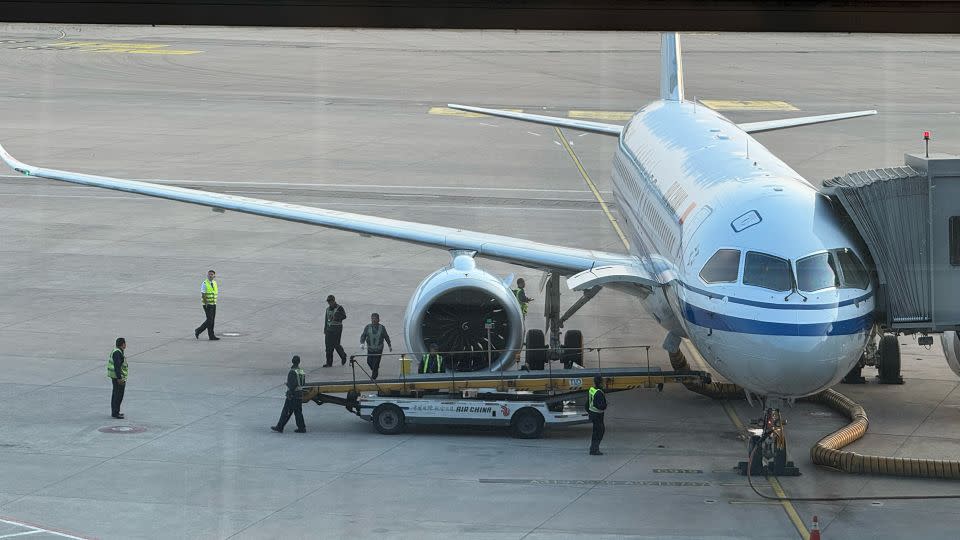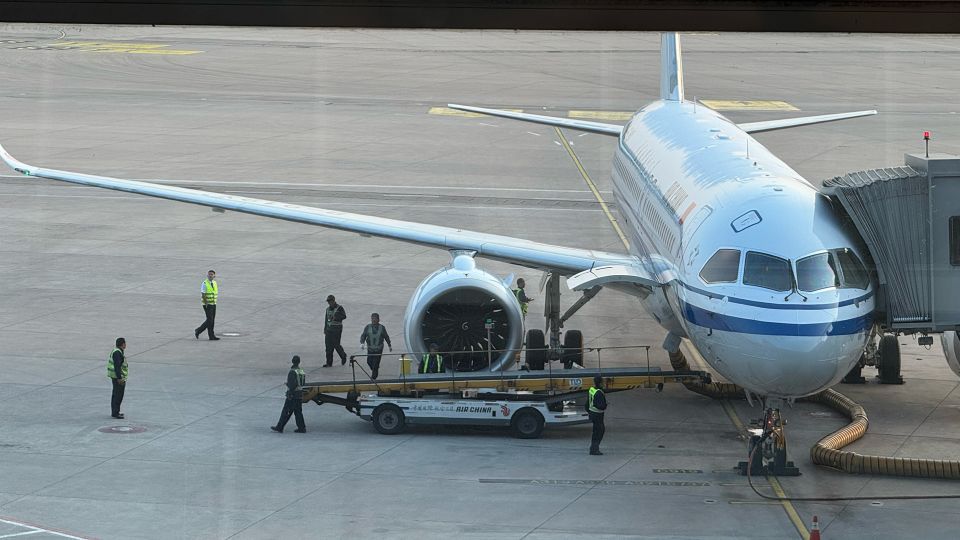I’ve flown more than a million miles on dozens of airlines around the world – and have lost count of the number of times I’ve hopped on an Air China plane for the short trip from Beijing to Shanghai.
During the week, airlines schedule more than 60 flights daily between the capital and the country’s financial center – one way – often using their largest aircraft, from the iconic Boeing 747 to the latest Airbus A350.
With many widebody options in its fleet of nearly 1,000 aircraft, Air China deployed a narrowbody for my flight last Thursday morning. But it wasn’t just any narrowbody; it was the national carrier’s first and so far only C919 aircraft.
The C919 does China’s first domestic passenger aircraftmanufactured by the Shanghai-based state-owned Commercial Aircraft Corporation of China (COMAC). After years of development and lengthy delays, the twin-engine aircraft made its maiden commercial voyage in May 2023 on home-based China Eastern Airlines.
The C919 has long been touted as a potential game-changer in global commercial aviation and is COMAC’s answer to the Boeing 737 and Airbus A320 – two of the world’s best-selling aircraft types.
Despite having registered more than 1,000 orders, the C919 appears to be dogged by skeptics who question its ‘Chinese character’ (with key components such as engines and flight control systems imported from the US and Europe) and its commercial viability, given the duopoly Airbus-Boeing on the market. .


However, for an aviation nerd like me, none of the controversies can dampen my enthusiasm to unlock a brand new aircraft type and review this still-rare passenger experience, as there are only a handful of C919s in the air in mainland China, the only region it has been certified to fly so far.
I showed up at the gate at Beijing’s sprawling Capital International Airport (PEK) an hour before departure to see the C919 in person for the first time. From a distance it could easily be mistaken for an A320 with its more rounded nose and curved fuselage (compared to the B737). More discerning eyes would likely notice the C919’s distinctive cockpit windows and wingtips.
My first impression when I stepped into the month-old C919 was that it felt like an A320 – with a bit of the smell of a new plane. To its credit, Air China has chosen the most spacious configuration among the “Big Three” state-owned airlines operating this aircraft type with 158 seats (out of a possible maximum of 192) – eight in first class and 150 in economy class.
In this era of ‘cattle class’ for economy fliers, every extra legroom counts. I paid in advance for an emergency exit seat and was more than happy with the legroom in both exit rows (19 and 20), which offer more space than even domestic first class. As someone who is 180cm (or 5’11”) tall, I could easily stretch my legs all the way out, with my feet barely touching the seat in front of me.
Other aspects of the interior look more mundane: there are individual air nozzles for customized climate control, and economy passengers not in the exit rows each have a folding device holder (for smartphones and tablets) just above the tray table.
The economy seats themselves – in a typical 3×3 layout – are of the slim variety that is becoming increasingly popular with airlines as they cram more rows into the main cabin.
But any potential discomfort on this flight was mitigated by the complimentary pillows – I put one behind me for extra padding. Under the seats, every three passengers share two power outlets with both USB-A and USB-C plugs.
For a jet with a range of up to 5,555 kilometers (just under 3,500 miles), Air China’s C919 seems to rely on passengers providing their own inflight entertainment. While each seatback includes space for literature (with actual magazines on board) and cubbies for personal items, there are no individual screens or WiFi on board (programming displayed on the drop-down screens seemed universally unappealing) – that must be where the device cradle comes in .


I was pleased to hear the flight attendant emphasize the aircraft type during his pre-takeoff briefing. “Today you are flying an Air China C919 aircraft, the first large aircraft developed independently by China,” he said as the plane taxied to the runway.
Air China serves hot meals in economy during meal hours, even for short-haul flights (today’s flight time: 1 hour and 40 minutes). Before boarding, bottled water was placed in each seat pocket and my omelette – along with yoghurt and a chocolate bar – tasted great.
I checked one of the two cheap toilets in the back of the cabin. It’s bright (and was clean and well stocked on this flight), has a coat rack and feels less cramped than many of the latest versions on the A320 or B737.
As the tops of Shanghai’s tallest skyscrapers emerged in the clouds, our plane began its descent toward Hongqiao International Airport (SHA).
As I sat in the window seat next to the engine, I remembered one of the two main complaints about the C919 that I had read online: engine noise. Everyone has different tolerance levels, but I didn’t find the noise much louder than that during a normal flight on a Boeing or Airbus narrowbody aircraft.
The other complaint apparently was the lack of space in the overhead bins. While the C919 isn’t going to win the overhead space competition, everyone on this entire flight seemed to be able to fit into their wheeled carry-on luggage with no problem.
After a smooth landing in Shanghai, about 40 minutes ahead of schedule, there was no applause or cheering (which is never a Chinese tradition on airplanes anyway). After disembarking, I noticed a few more passengers – perhaps alerted by the onboard announcement about the Chinese-made plane – taking pictures of the C919.
Apart from a few bumps, it was a decidedly uneventful journey. Most people – including frequent flyers like me – probably didn’t feel much difference flying this C919 compared to previous flights on the ubiquitous A320 or B737. In terms of my passenger expectations, this C919 flight earned a solid B in safety and comfort.
Ultimately, travelers generally don’t choose flights based on aircraft type – unless they feel there are compelling reasons to do so (as recently shown in the following several incidents involving Boeing jets).
COMAC undoubtedly owes a lot to the success of the C919, as the Chinese government seeks to upgrade key industries and reduce dependence on Western technology. But geopolitics and national pride aside, analysts have pointed out that COMAC must prove the C919’s reliability to potential operators in Southeast Asia, Africa and other emerging markets if the passenger jet program is to take off – in the absence of fast certification by USA and other countries. European regulators.
If more passengers continue to have “remarkably unremarkable” experiences with the C919, COMAC may well be able to transform its jet from a showhorse to a workhorse of airlines in China and beyond.
For more CNN news and newsletters, create an account at CNN.com







